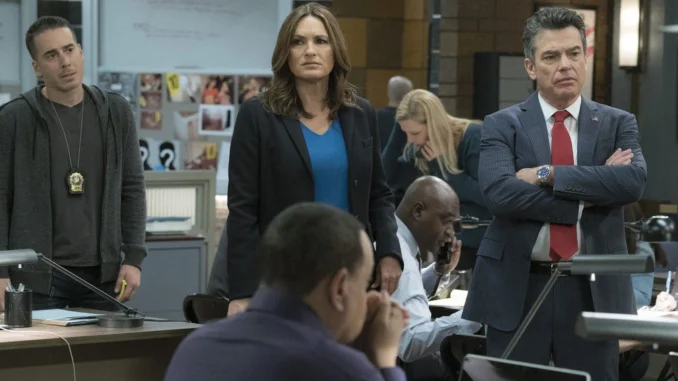
Law & Order: SVU has become a cultural touchstone over the past 25 years, tackling tough topics and giving a voice to survivors of heinous crimes. While it’s still going strong, rewatching the inaugural season reveals some stark realities about how the show has evolved. Let’s dive into ten of these realities that might surprise even the most devoted fans.
1. The Tone is Different
When SVU first premiered, it had a tone that was raw and gritty, but it often lacked the nuanced approach that characterizes later seasons. Early episodes leaned heavily on shock value, showcasing the crimes in a way that sometimes felt sensationalized. While this drew viewers in, it also meant that the emotional weight of the victims’ stories didn’t always resonate as deeply as it would in later seasons.
2. Character Development is Minimal
One of the most noticeable differences is how character development has evolved. In season 1, we see glimpses of the main characters, but their backstories and emotional arcs are largely underdeveloped. For instance, Detective Olivia Benson (Mariska Hargitay) is portrayed primarily as a strong, capable officer, but her personal struggles and motivations are only hinted at. Fast forward to the present, and we have a wealth of character history that enriches every episode.
3. The Victim’s Perspective is Less Central
In later seasons, SVU became known for prioritizing the victim’s perspective, showcasing their stories with sensitivity and depth. However, season 1 often felt more focused on the procedural elements, sometimes sidelining the emotional journeys of the victims. This shift towards a survivor-centered narrative is one of the show’s most significant and commendable transformations.
4. Lack of Diversity in Storylines
Diversity has become a hallmark of SVU over the years, but season 1 struggles with this aspect. The show initially tended to feature a narrow range of victims and stories, often reflecting a limited perspective. As the series progressed, it embraced a wider array of narratives, highlighting issues faced by different communities and backgrounds. This growth is essential for keeping the show relevant and impactful in today’s society.
5. Outdated Cultural References
Watching season 1 now can feel like stepping back in time—not always in a good way. Cultural references, fashion, and technology are often outdated, making some moments feel less relatable. For example, the early use of flip phones and landlines may bring nostalgia, but it also serves as a reminder of how far we’ve come in terms of communication and social awareness.
6. Detective Work is Less Realistic
While SVU has always aimed to be a realistic portrayal of police work, season 1 occasionally veers into territory that feels more theatrical than authentic. The methods used to solve cases often lack the procedural rigor that fans have come to expect. As the series progressed, it adopted a more realistic approach to investigations, emphasizing the importance of procedure and protocol.
7. Limited Female Representation
Though SVU has been lauded for its portrayal of strong female leads, season 1 features a significantly limited range of female characters. Most women are cast in victim roles or as minor characters, and the show doesn’t yet showcase the depth of female law enforcement professionals that later seasons would. This change has been crucial in showcasing women in diverse roles beyond just victims.
8. Chemistry Between Characters is Still Developing
The chemistry between cast members, particularly between Benson and her partner, Detective Elliot Stabler (Christopher Meloni), is still in its infancy during season 1. While the potential for their dynamic is evident, the depth and complexity of their relationship that fans cherish in later seasons are yet to fully develop. Rewatching highlights how their partnership evolves into one of television’s most beloved duos.
9. More Over-the-Top Plotlines
Season 1 features several plotlines that, in hindsight, come across as over-the-top or implausible. Some episodes delve into sensationalist territory, which can detract from the more serious themes the show aims to tackle. As the series matured, the storytelling became more grounded and realistic, focusing on compelling narratives that resonate with audiences.
10. The Evolution of Social Issues
One of the most striking realities of rewatching season 1 is the evolution of social issues addressed in the show. In 1999, some topics—such as human trafficking or consent—were not as widely discussed or understood. Fast forward to today, and SVU has taken on a vital role in raising awareness and sparking conversations around these complex issues. This shift demonstrates the series’ commitment to staying relevant and impactful in a changing societal landscape.
Conclusion
Rewatching season 1 of Law & Order: SVU offers a fascinating glimpse into the series’ early days and its evolution over the past 25 years. While the show has undeniably changed, its core mission of advocating for survivors remains steadfast. Despite the harsh realities of its beginnings, the progress made in storytelling, character development, and social awareness is a testament to the show’s enduring legacy.
